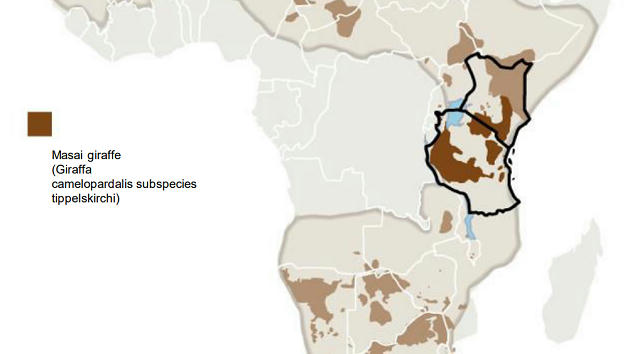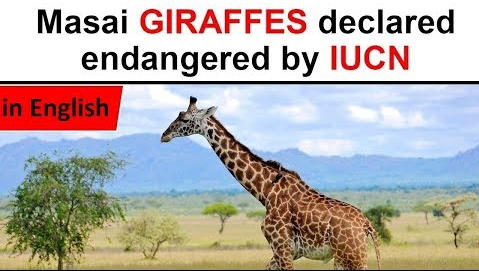Table of Contents
Context
- The International Union for Conservation of Nature (IUCN), the global authority on the conservation status of wild animals and plants, announced that Masai giraffes, a subspecies spread throughout Kenya and Tanzania, are now endangered, primarily because of poaching and changes in land use. Masai giraffe (Giraffa camelopardalis subspecies tippelskirchi)

Masai Giraffe (Giraffa tippelskir chi)
- The Masai giraffe, also known as Kilimanjaro giraffe is a remarkable species that is not only the largest giraffe but also the highest terrestrial animal in the world.
- The Masai Giraffe is powerful due to the design of the legs and the hooves. Most predators avoid adults because one swift kick can kill them.
- As all giraffe species, the Masai giraffes are native to the African continent, specifically to the savannas at the center and south of Kenya, as well as Tanzania.
- The Masai Giraffes live in herds that are quite smaller. They seem to be very tolerant of each other for the most part, especially the females.
- The Masai Giraffes spend most hours in a day feeding. They are grazers and can spend from 16 to 20 hours every single day out there eating or looking for food.
- There is no exact season for the beginning of the breeding season for the Masai Giraffes.
Threats
- The primary predators of these giraffes are lions and hyenas.
- Regarding anthropogenic threats, this species is classified as “Endangered” because in the last decades its population mainly by poaching.
- Estimated 2 to 10 percent of the population is hunted illegally every year in Serengeti National Park in Tanzania, according to the IUCN.
- Poaching has increased because of civil unrest and emerging markets for giraffe parts, including tail-hair jewelry and bone carvings. There’s even a belief among some that giraffe bone marrow and brains can cure HIV and AIDS, Tanzanian media have reported.
Forgotten fauna
- Giraffes historically have been understudied compared to other threatened species. While thousands of scientific papers have been written on white rhinos, only about 400 cover giraffes
- Consensus that there’s one species of giraffe with nine subspecies, evidence of genetic differences has emerged in recent years, suggesting that there are actually four species of giraffe and that the Masai is its own species.

Conservation
- In situ conservation of Masai giraffes is being done by several government agencies including Kenya Wildlife Service, Tanzania National Parks, Zambia Wildlife Authority; and non-governmental organizations including PAMS Foundation, and Wild Nature Institute.
- Community-based wildlife conservation areas have also been shown to be effective at protecting giraffes. At several zoos, Masai giraffe have become pregnant and successfully given birth.
Latest Burning Issues | Free PDF

























 WhatsApp
WhatsApp